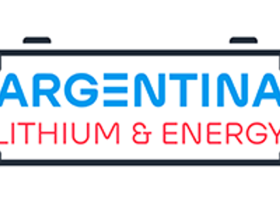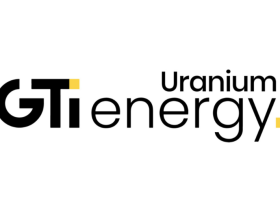With prices sliding throughout 2023, palladium hasn’t found the same balance from industrial sectors that platinum has despite having similar uses.
At the start of 2023, the price of palladium was expected to depend on the performance of the automotive sector. Despite auto sales starting to return to pre-pandemic levels, the price of palladium continued its downward trajectory.
Adding to palladium’s woes at the start of 2023 was a continued exodus by investors away from the metal, with Swarts noting that retail investment had contracted by 11 percent in 2022 and was expected to decline further in 2023.
How did palladium perform in 2023?
The price of palladium was under constant pressure in 2023. Starting the year at US$1,800.08 per ounce on January 2, according to data from TradingEconomics, it slid throughout the year to finish at US$1,098.49 on December 29.
This poor performance comes on the back of a stellar few years for the metal, which had remained above US$2,000 for much of the early 2020s, trading at around double platinum’s price. This peaked in March 2022, when palladium climbed to US$3,180 an ounce as fears over supply shortages out of Russia following its invasion of Ukraine took hold.
“While Russian production remained primarily unaffected during 2022, the self-sanctioning action of equipment suppliers could reign in 2023 production and should be closely monitored,” said Swarts at the start of 2023.
Palladium price from January 1, 2023, to December 31, 2023.
Chart via Trading Economics.
However, these persistent highs lead the automotive sector to begin to shift its buying to the less expensive platinum for use in catalytic converters.
As 2023 wore on, palladium supply deficits deepened and platinum shifted into deficit, but shortfalls for both were offset by large above-ground stockpiles which helped keep pricing suppressed, as noted in Metals Focus Precious Metals Weekly report from January 4, 2024.
In addition to reduced industrial demand within the automotive sector, palladium has also been facing headwinds as manufacturers restructured their supply chains during 2023 to decrease their reliance on Russia, which produces over 40 percent of global palladium supply, either by substituting it with platinum when possible or looking to other countries for supply without the same geopolitical concerns attached.
This came after urging by the White House in February 2022 for certain critical industries, including semiconductors, to diversify supply chains.
What will happen to the palladium price in 2024?
The expectation for 2024 is that palladium will continue to be dogged by excess above-ground supply. Rohit Savant of CPM Group suggests the pressures of falling basket prices will continue to affect miners going into 2024 and may have a negative impact on supply. However, he doesn’t see much relief coming for prices.
“For prices to rise in any meaningful way, there would need to be some sort of supply reduction or disruption,” he said. “While mining companies are expected to be challenged by the weakness in prices cutting production, especially in South Africa, this year is likely to be difficult. Especially since it is an election year and so much of South African employment and GDP is dependent on the mining sector.”
Consultancy group Metals Focus also expects there to be continuing pressure on prices in 2024. Its Precious Metals Weekly report from January 4 suggests existing stockpiles and significant investor shorting will be themes that carry over from 2023, although weakening demand will lead to smaller deficits.
“Given the inflationary costs of wages, power and the weakening rand, more than 50% of mines in South Africa are lossmaking at the spot basket price,” Swarts said. “We can expect production curtailment and mine closure if prices remain at current levels over the next 2-5 years.”
Metals Focus is also predicting a boost in recycled palladium owing to a 16 percent increase in autocatalyst scrap supply as consumers replace aging cars, many of which have higher palladium loadings, following a two-year decline during the pandemic. This is expected to push overall supply up 1 percent.
Investor takeaway
With palladium prices not expected to see any substantial recovery in 2024, investors are continuing to short the metal. The price will rely largely on demand from industrial rather than retail segments. Investors considering investing in the sector due to its low cost should take note of short-term challenges and long-term outlook when weighing opportunities.
According to a report issued by CME Group on January 17, in the long term, increased substitution of palladium for platinum will be needed to reduce bottlenecks that will arise from supply deficits in the platinum market, freeing up platinum supply for use in the growing hydrogen market. The firm expects “a period of palladium-for-platinum ‘reverse’ substitution beginning from 2025.”
With the continued conflict between Russia and Ukraine, manufacturers are continuing to look for alternative suppliers of the metal, which could lead to increased demand for palladium from other sources. Edward Sterck of the World Platinum Investment Council suggested palladium will start to move into a surplus situation starting in 2025, in part due to autocatalyst recycling.
“The outlook for palladium is dependent upon a significant increase in the supply of recycled metal; the shortage of end-of-life vehicles could push out the tipping point for palladium to later in the decade,” Sterck said.
Looking even further, many countries plan to phase out sales of internal combustion engine vehicles between 2030 and 2040 in favour of electric vehicles and other new energy vehicles, which don’t require palladium.
This fall-off in demand from declining use of palladium in the auto sector would have long-term implications for the metal, but new technologies being developed by Nornickel would see palladium’s use extended as part of the energy transition. The applications being tested are for use as a catalyst in hydrogen power systems as well as applications in the production of solar cells. Results from testing are expected to be delivered by the end of 2024.
Securities Disclosure: I, Dean Belder, hold no direct investment interest in any company mentioned in this article.





